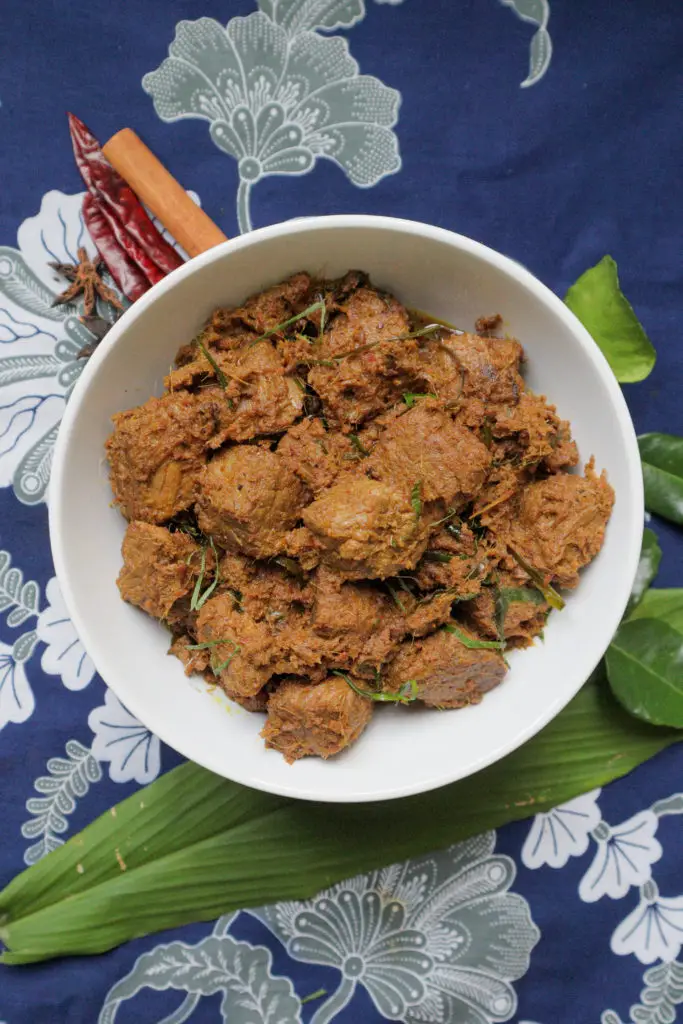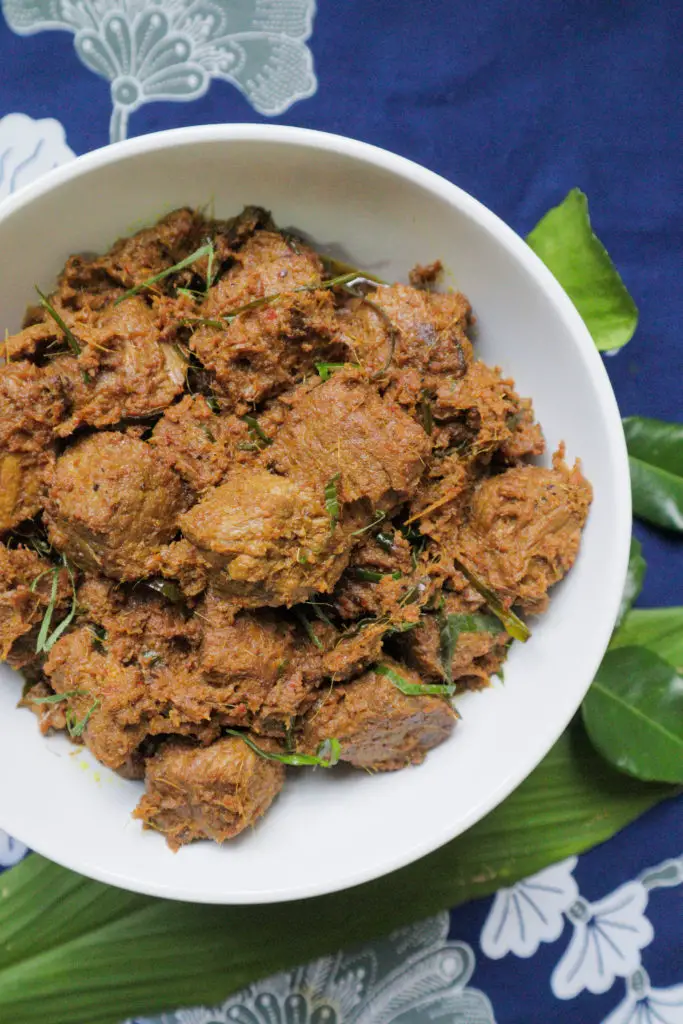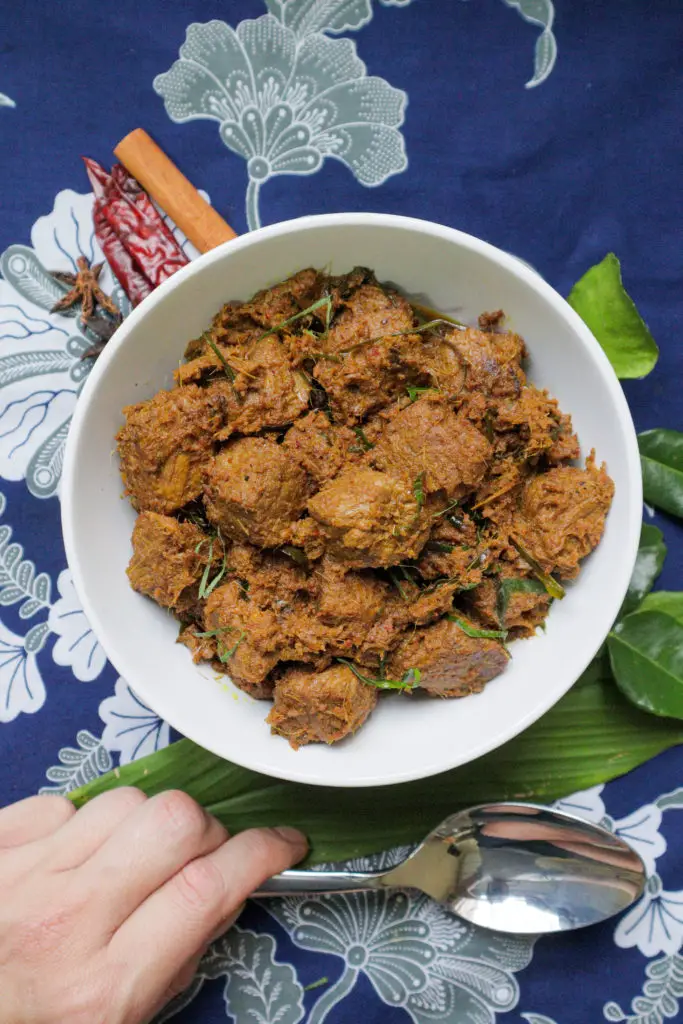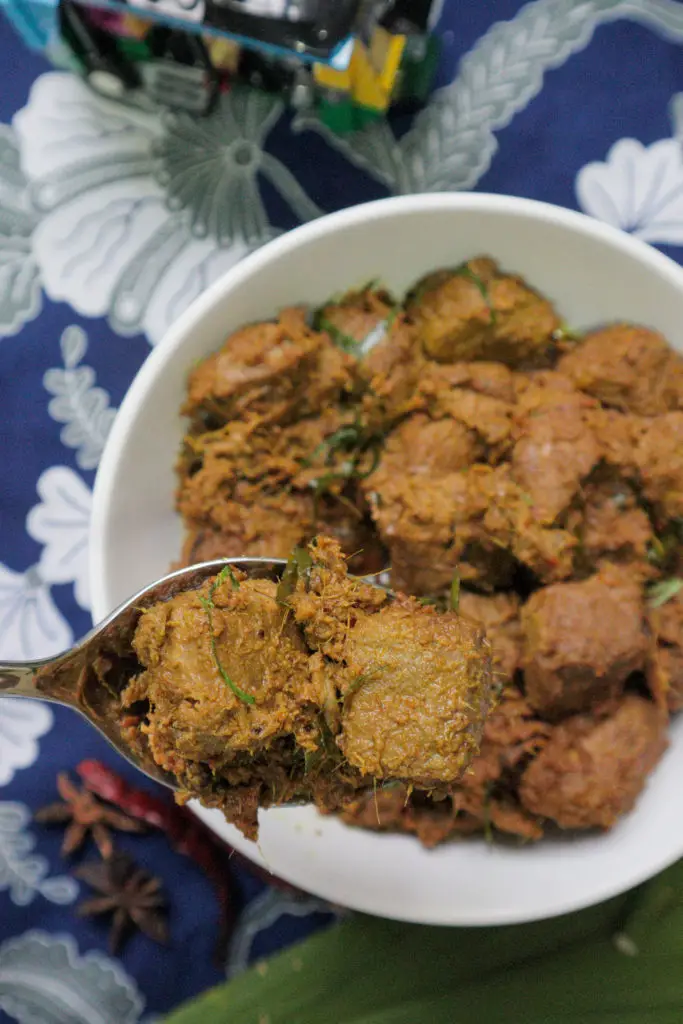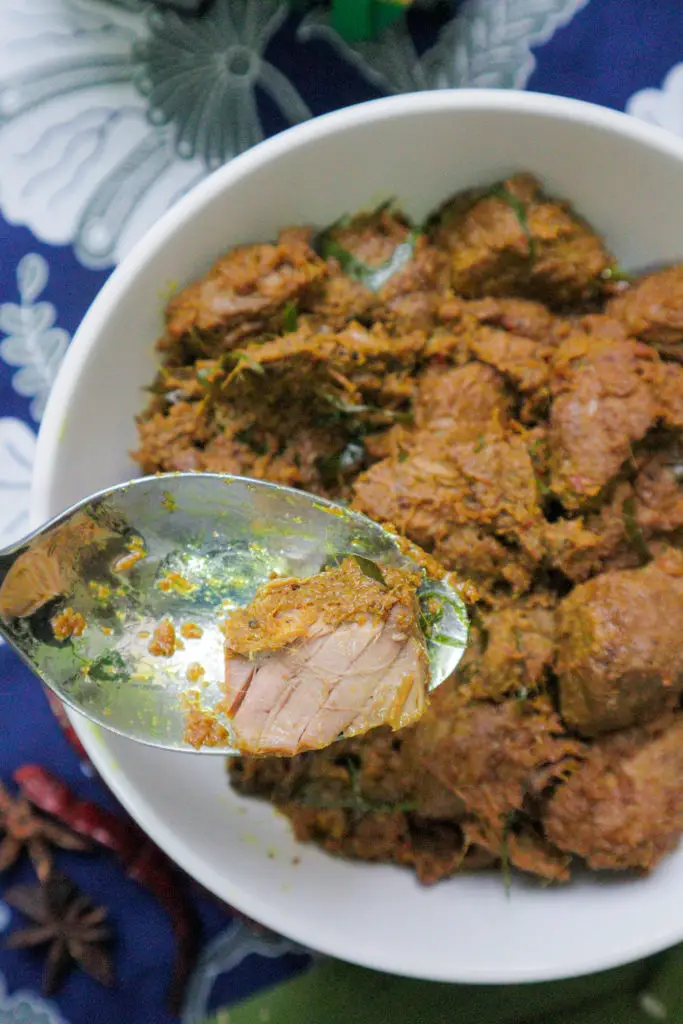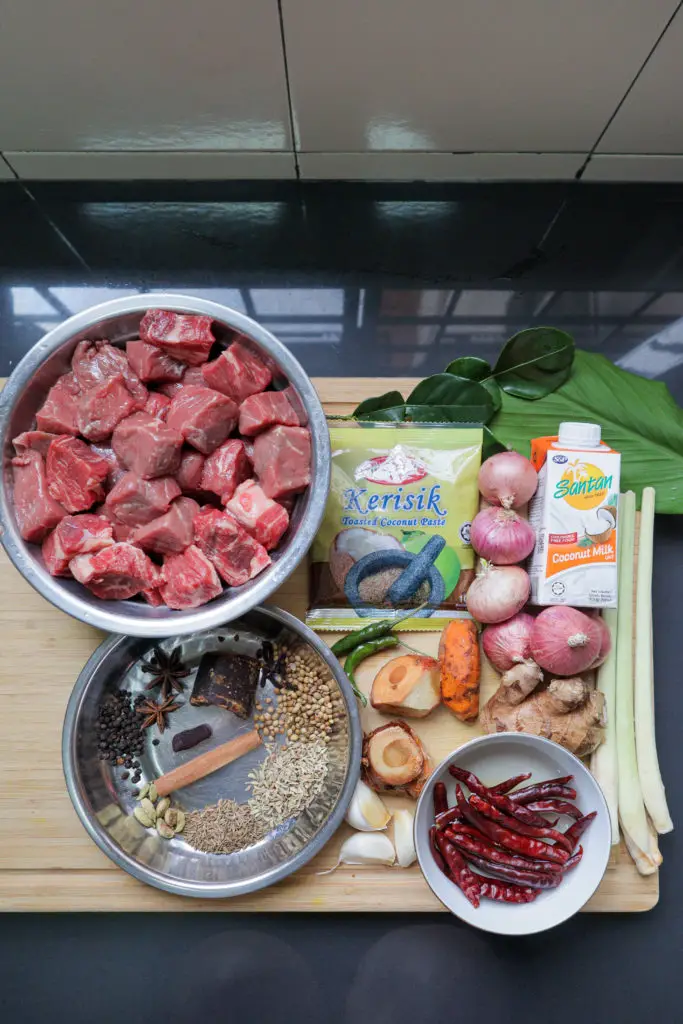It’s one more sleep to Hari Lebaran!
We are so excited that we cooked Rendang last weekend (and finished it! haha).
You must be wondering why we call it Rendang (Tik) Tok? No, it has nothing to do with the social app.
We actually cooked this dish last year for Raya (since we couldn’t visit our friends).
Originating from Perak, Rendang Tok differs from other rendang variants due to the addition of daun kunyit (turmeric leaves) which gives it a distinct fragrance. As we couldn’t get daun kunyit last year – we called the dish Rendang (Tak) Tok then.
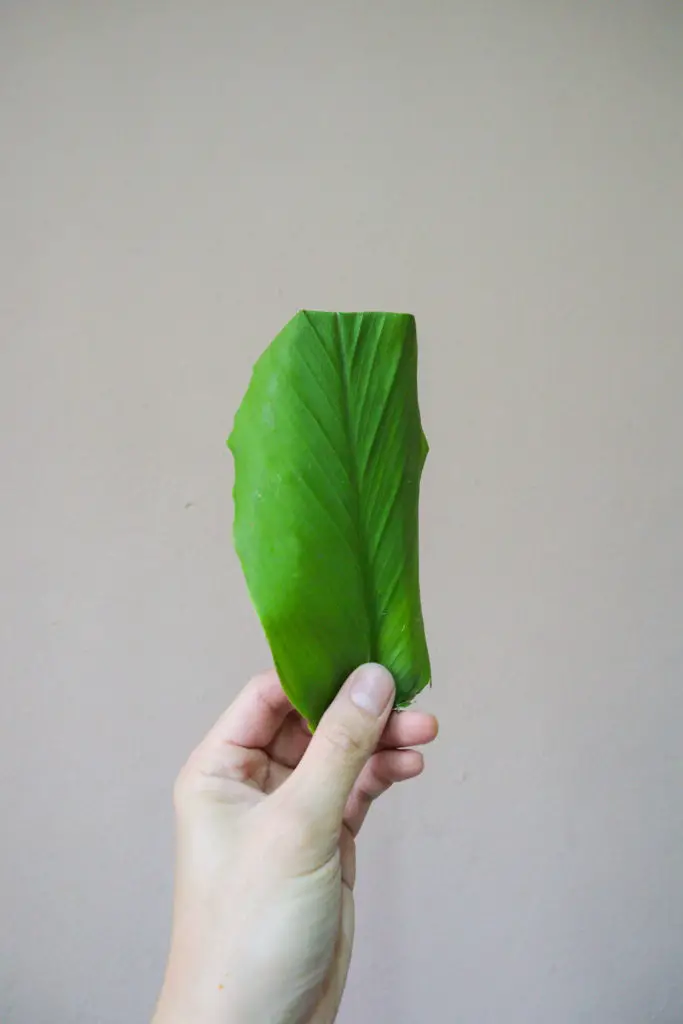
Daun kunyit is the key ingredient for Rendang tok 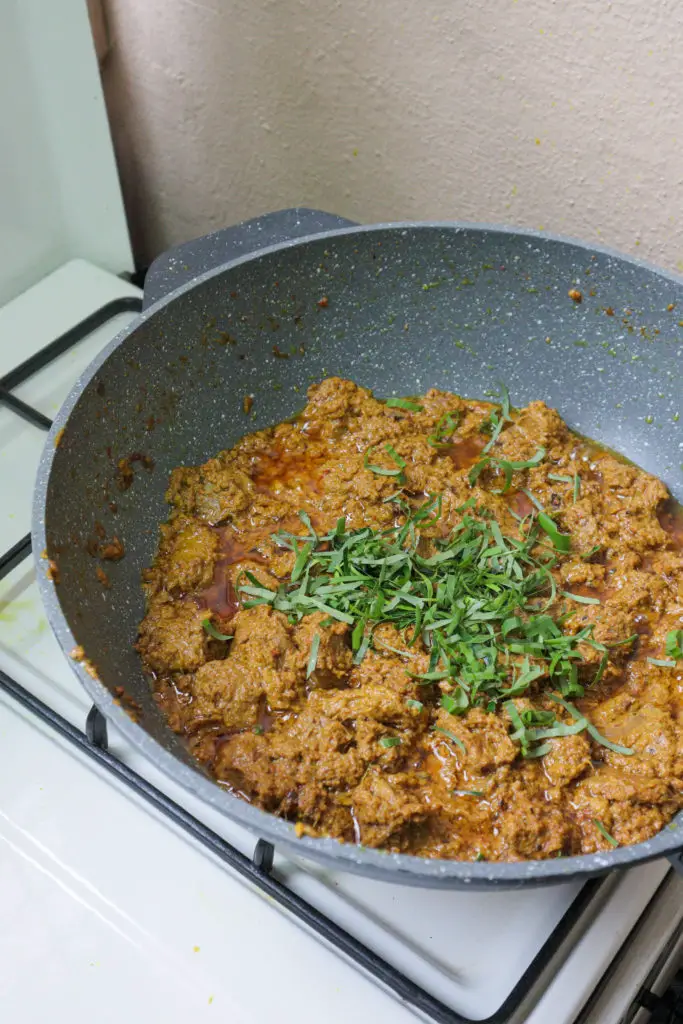
This year, we got our daun kunyit and ticked that box, hence – we call it Rendang (Tik) Tok!
A dish that is slow-cooked and braised in coconut milk and spices for hours, rendang is indeed a labour of love. The meat just absorbs all the wonderful flavours, before it is finished with kerisik, daun kunyit and daun limau purut.
The result is tender beef bursting with umami and complex flavours thanks to the multitude of spices used.
We just love cooking and eating this dish! We followed our recipe from last year – which was developed based on Betty Yew’s recipe in her Rasa Malaysia cookbook (published in 1982), and Che Nom’s recipe.
Check out the post here for more tips to cook this dish.
Also check out our Instagram posts here and here for more pictures and videos.
Selamat Hari Raya!
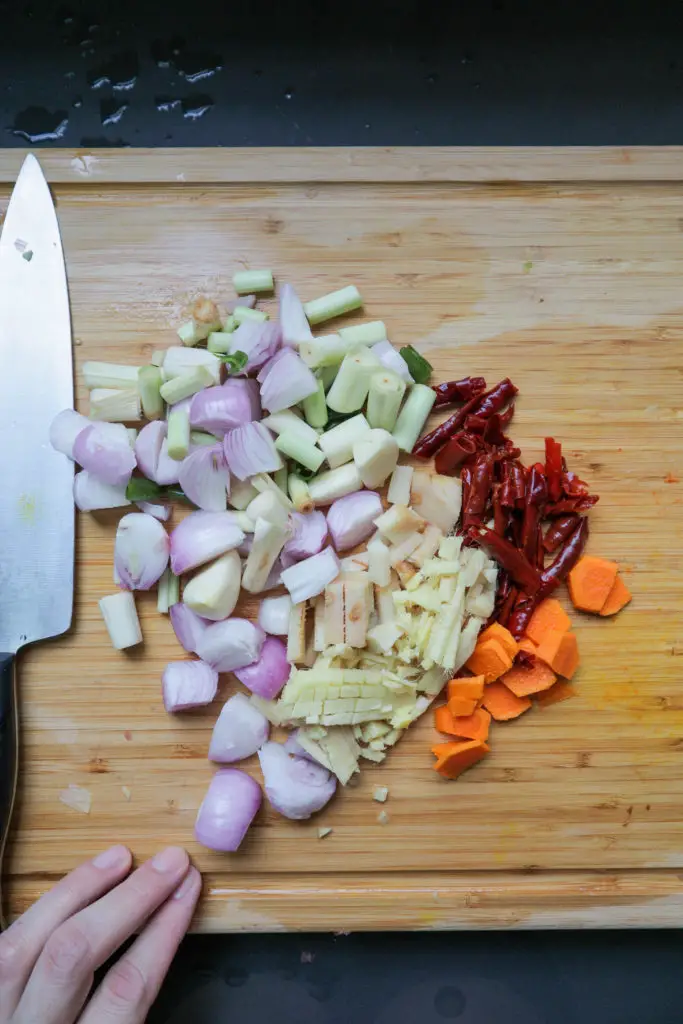
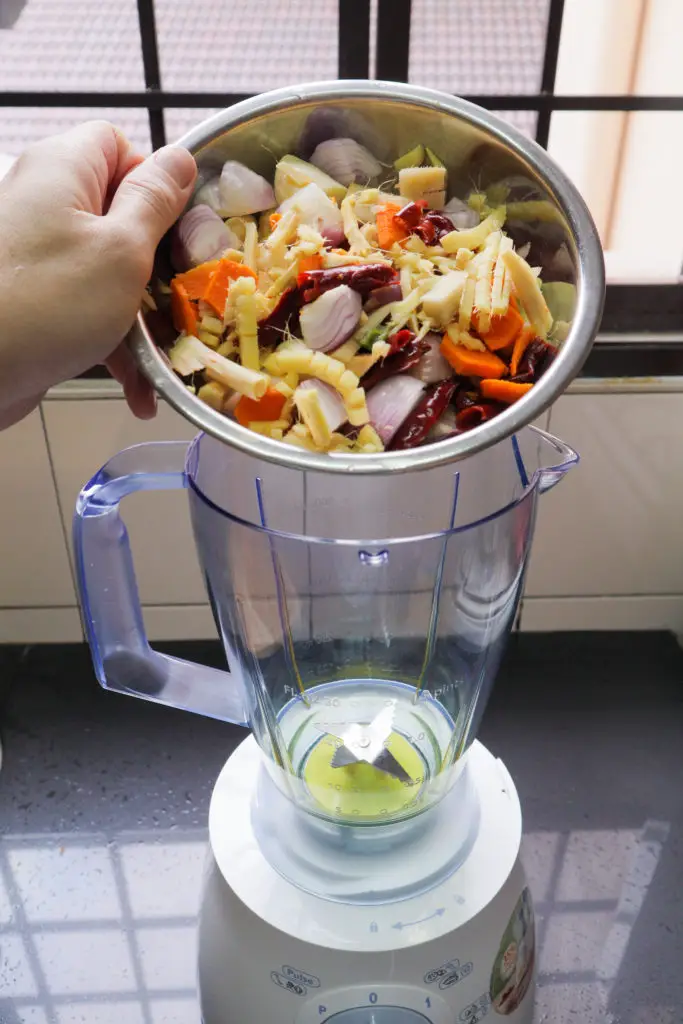
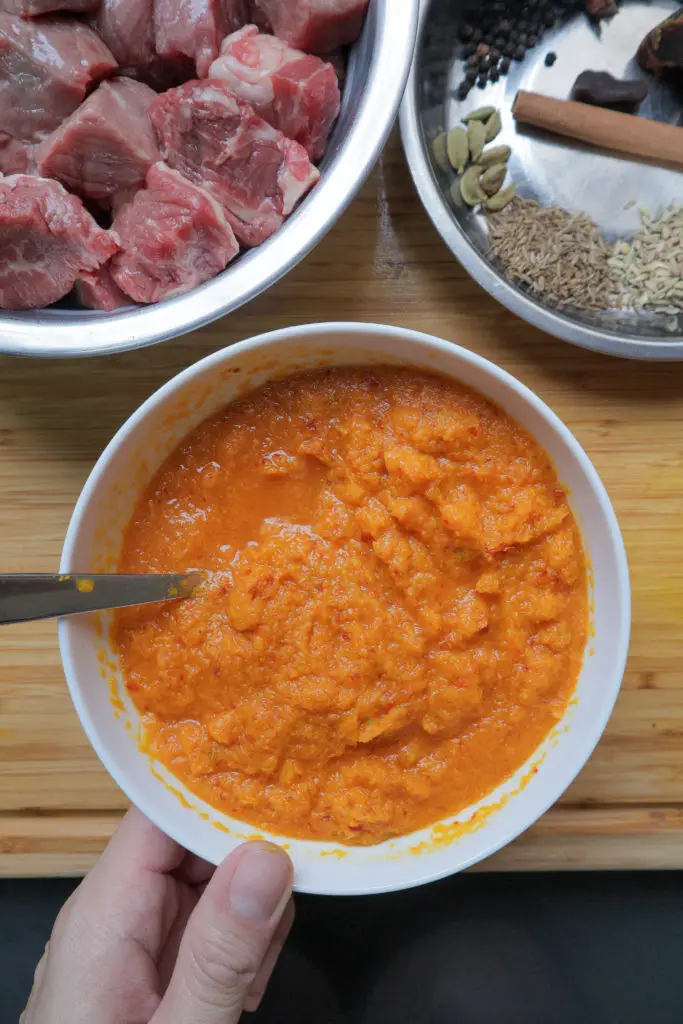
Wet blended ingredients
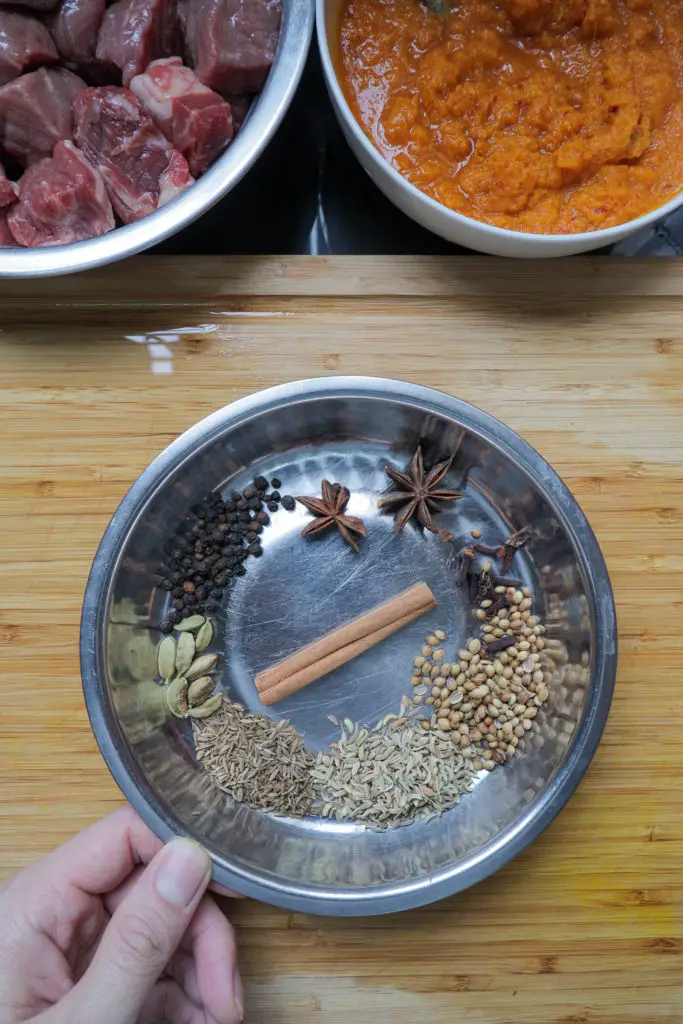
Dry spices 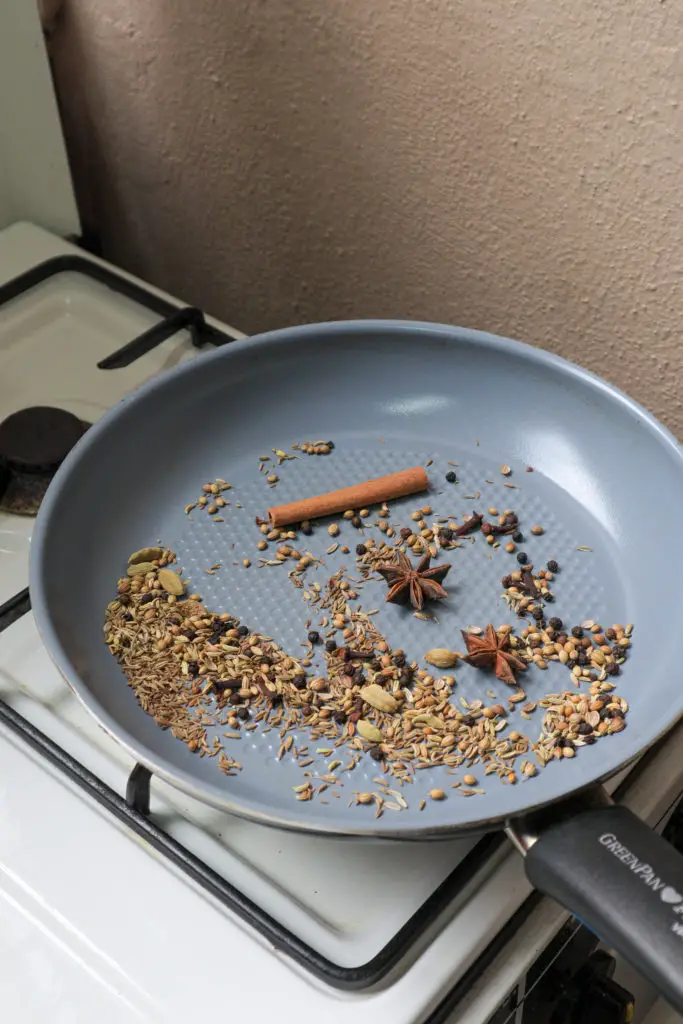
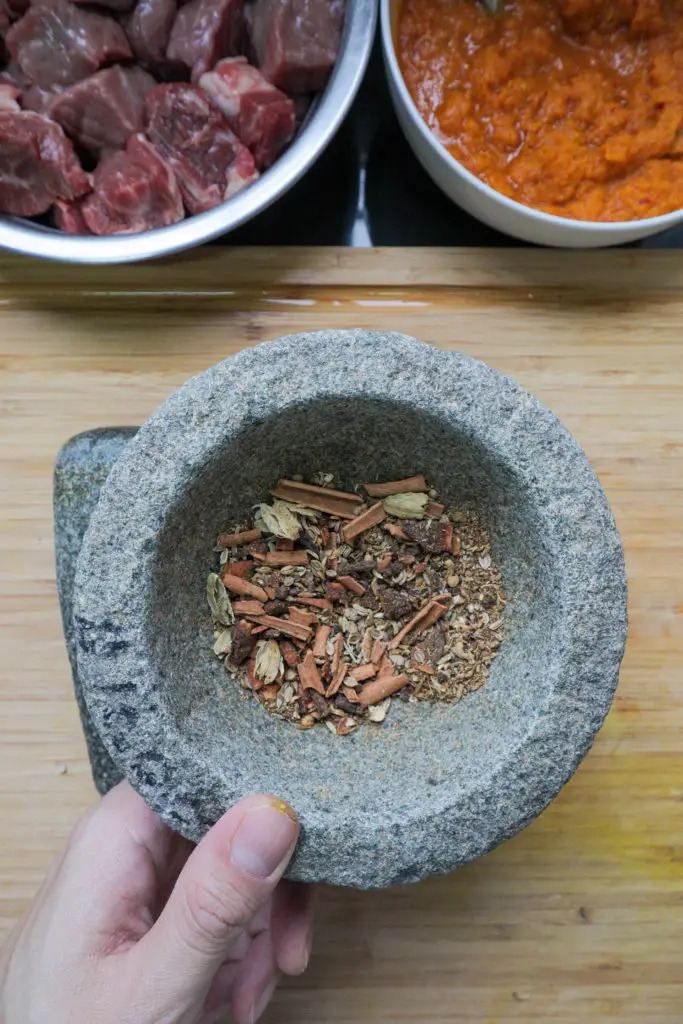
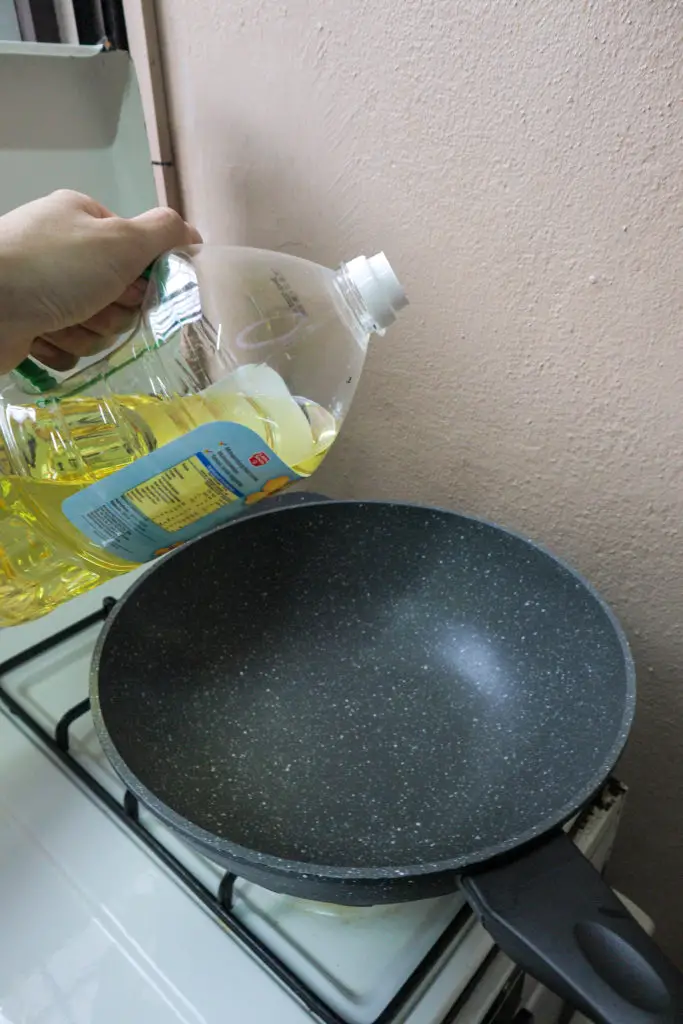
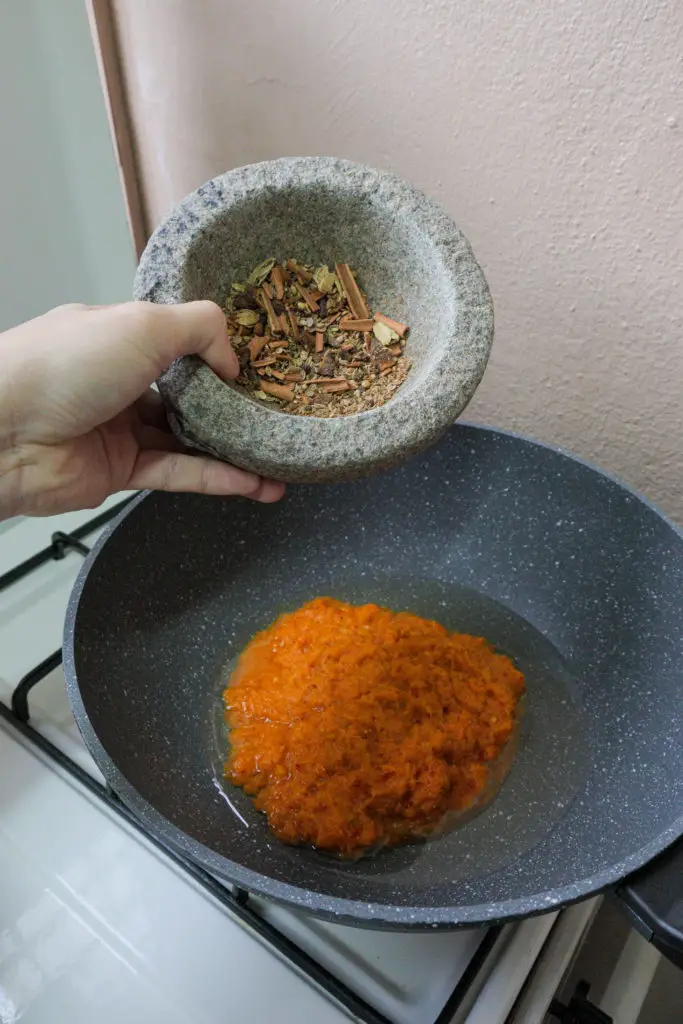
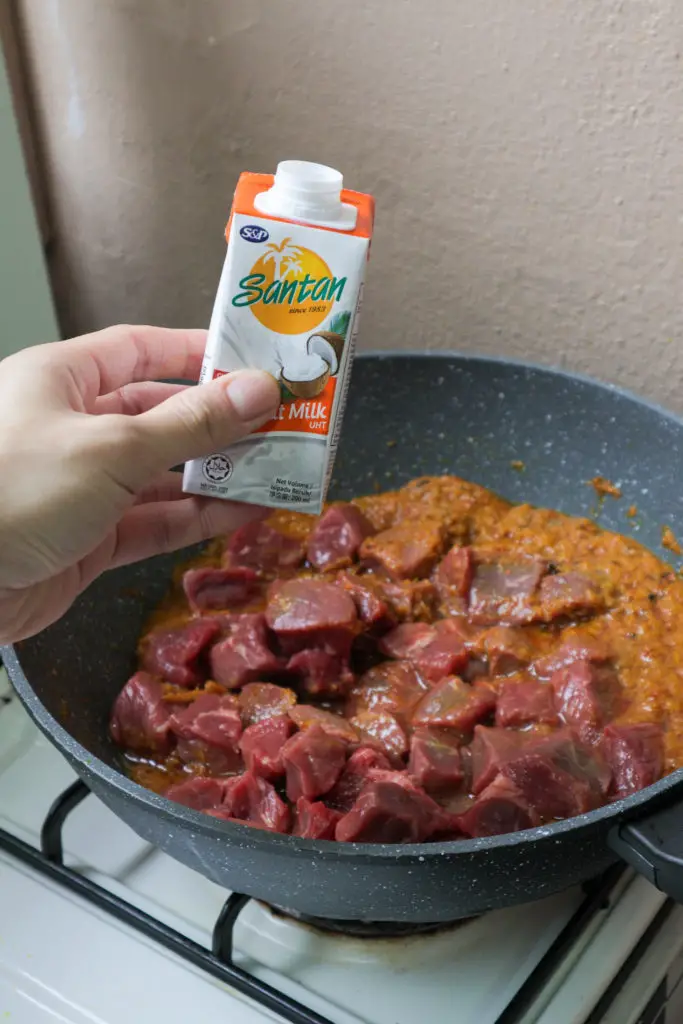
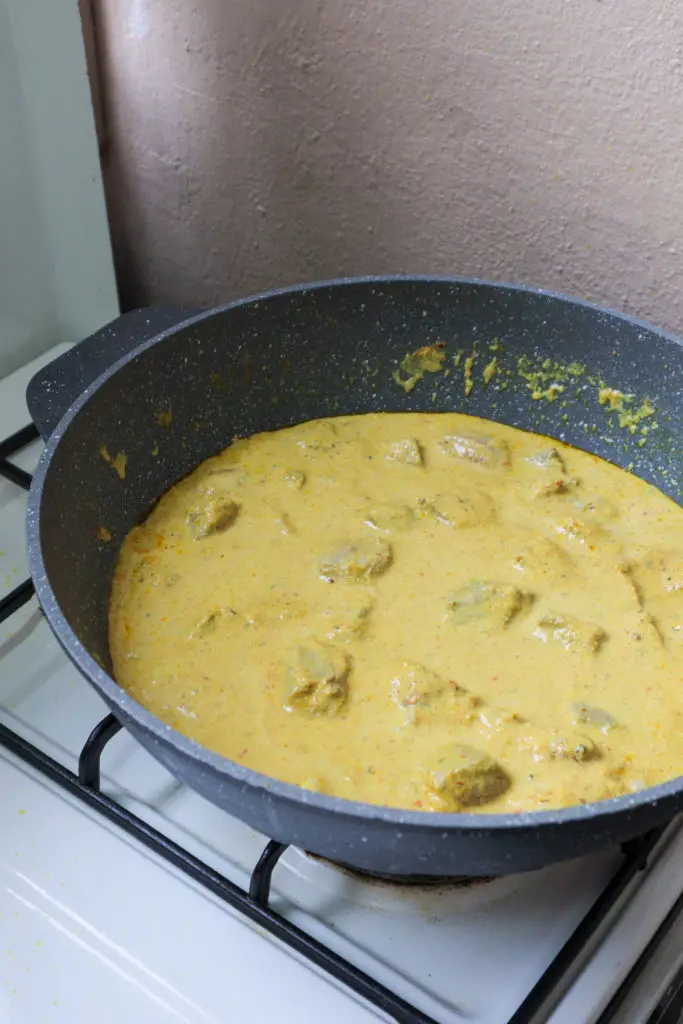
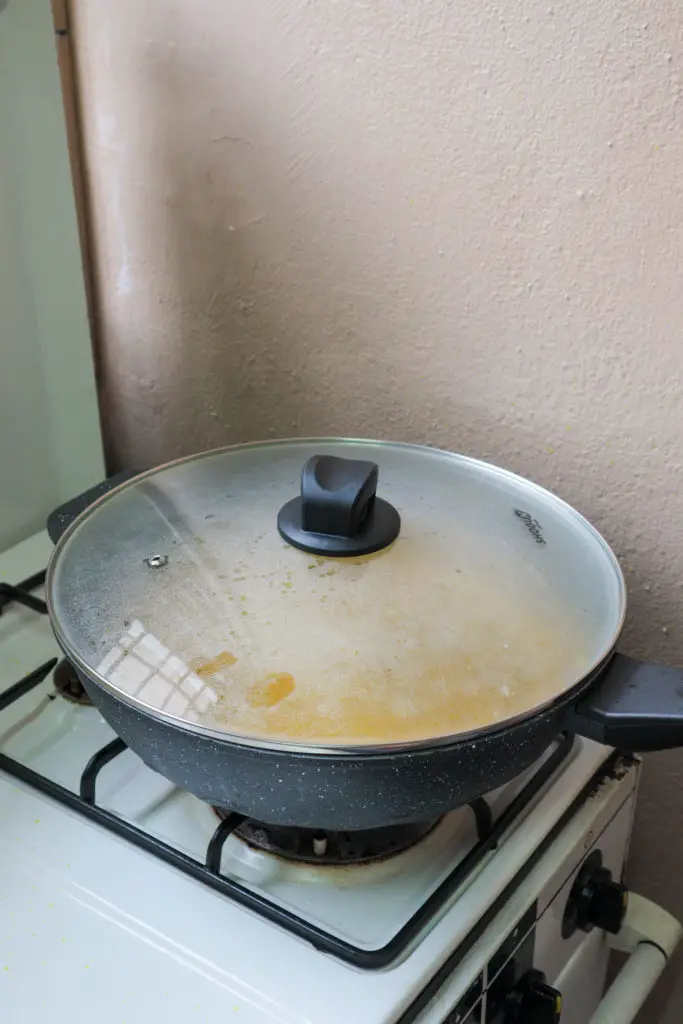
Slow cook for 1.5-2.5 hours until sauce has reduced and beef is tender
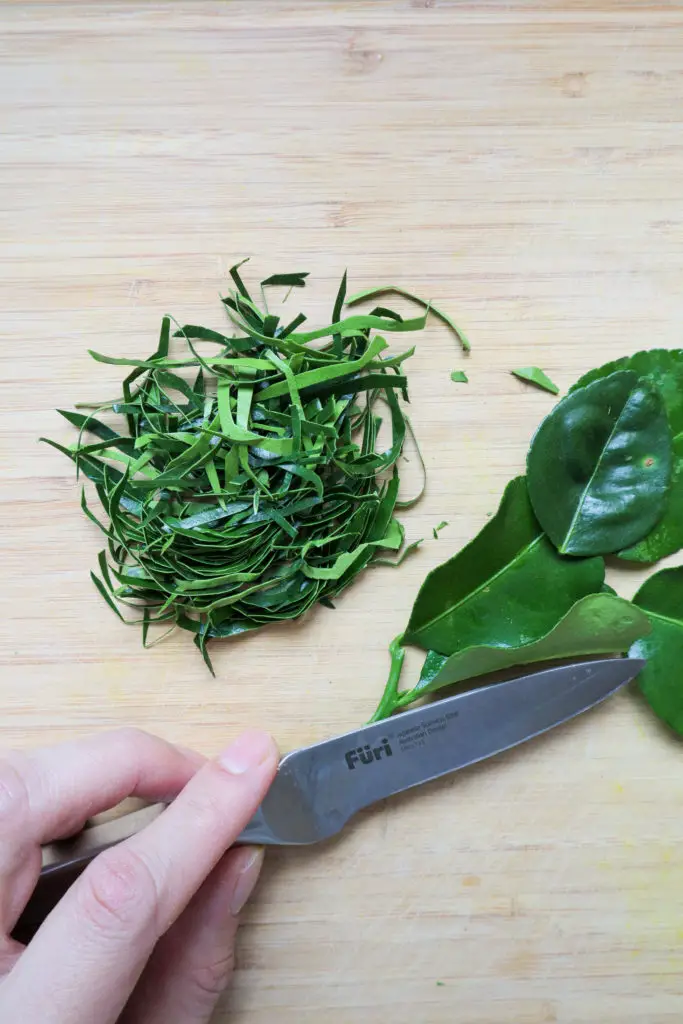
Julienne daun limau purut… 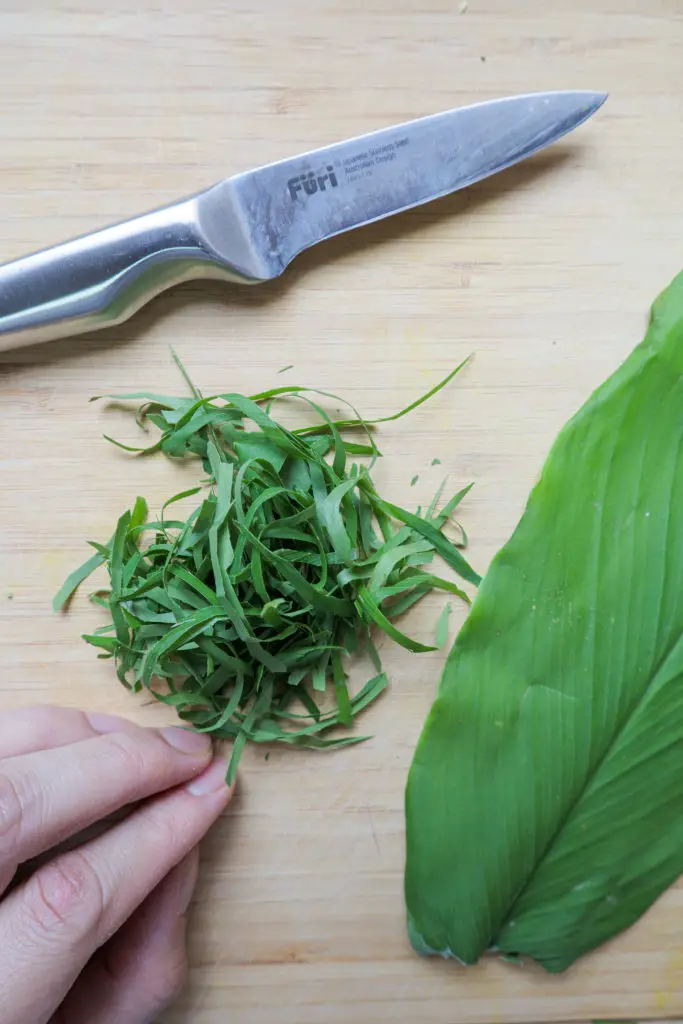
… and daun kunyit. 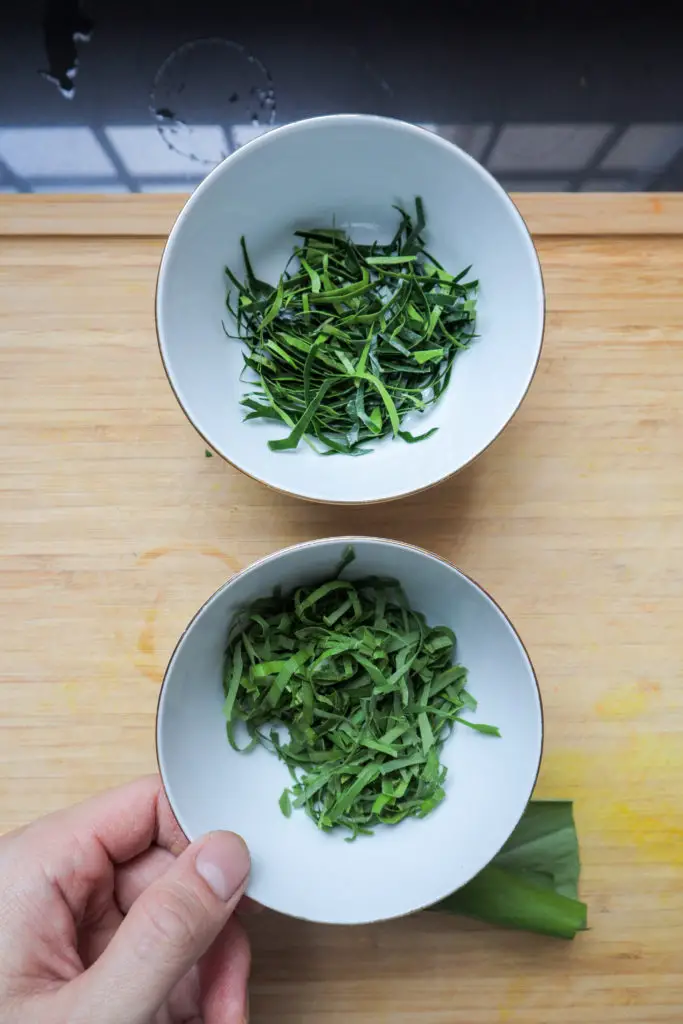
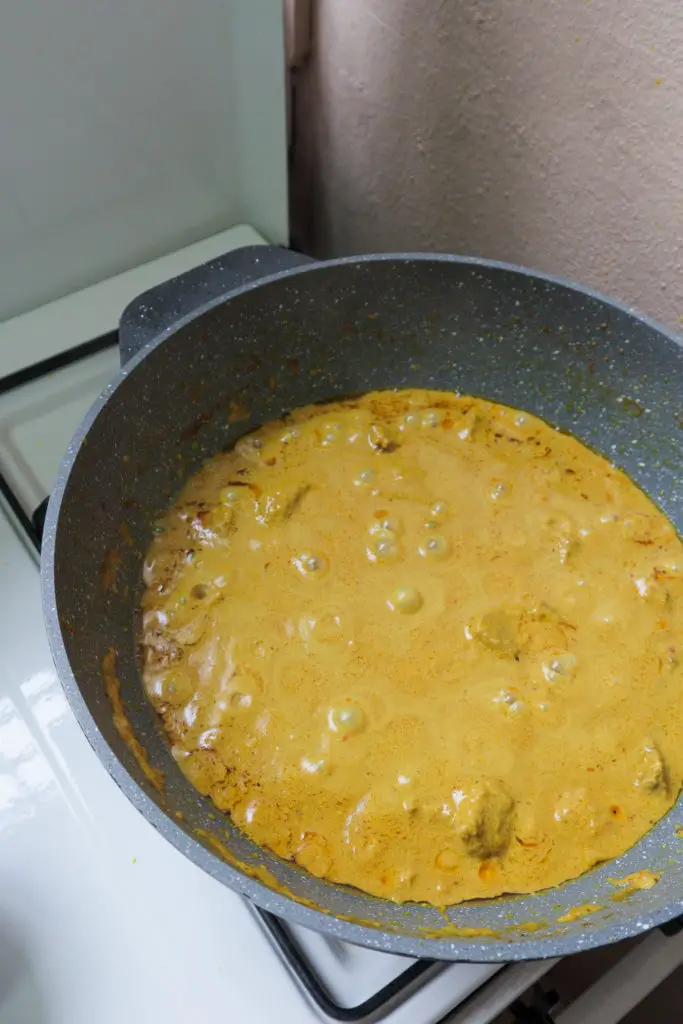
After 1.5 hours of cooking 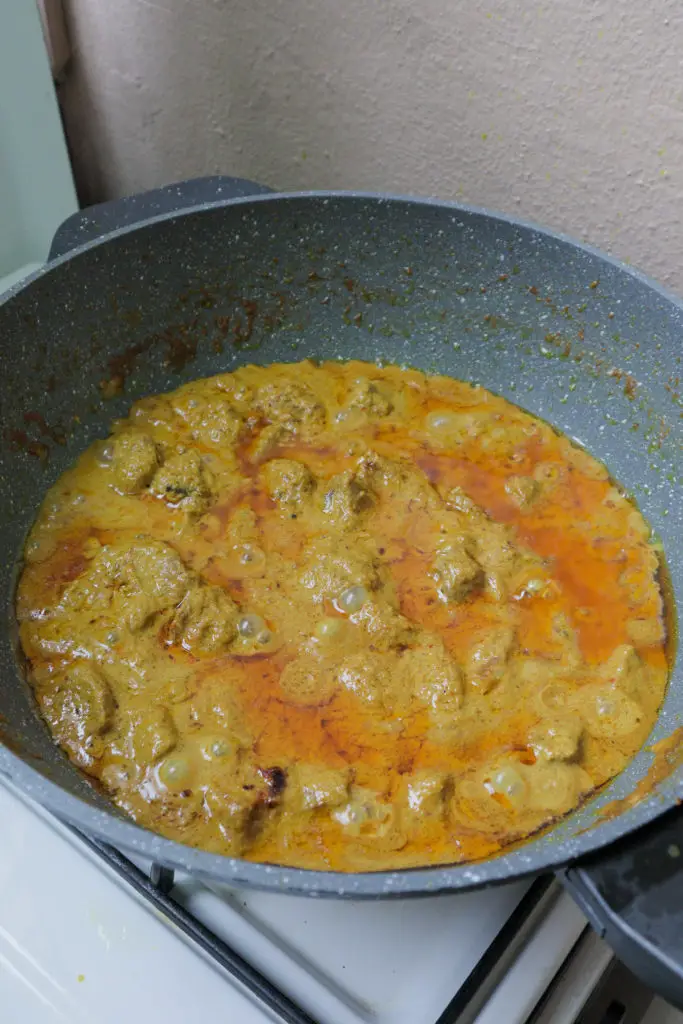
After 2 hours of cooking 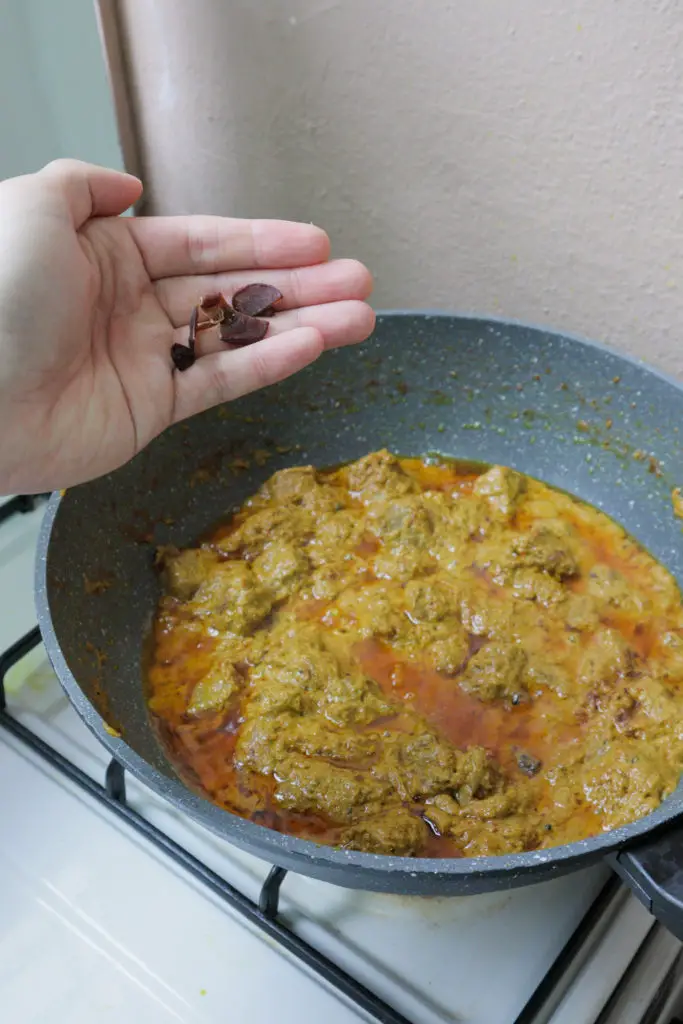
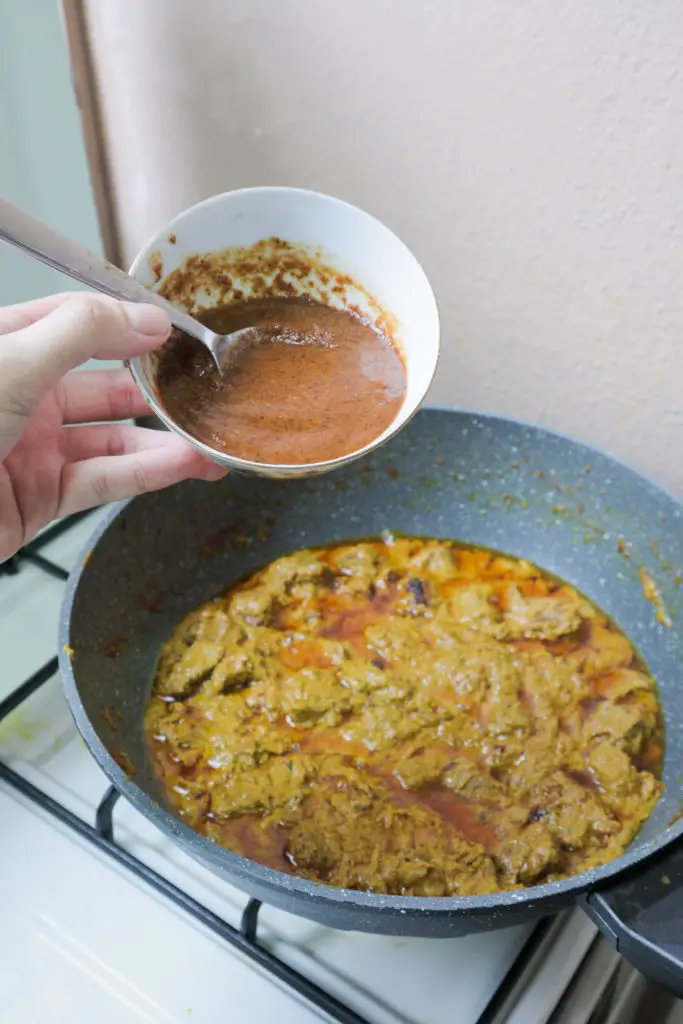

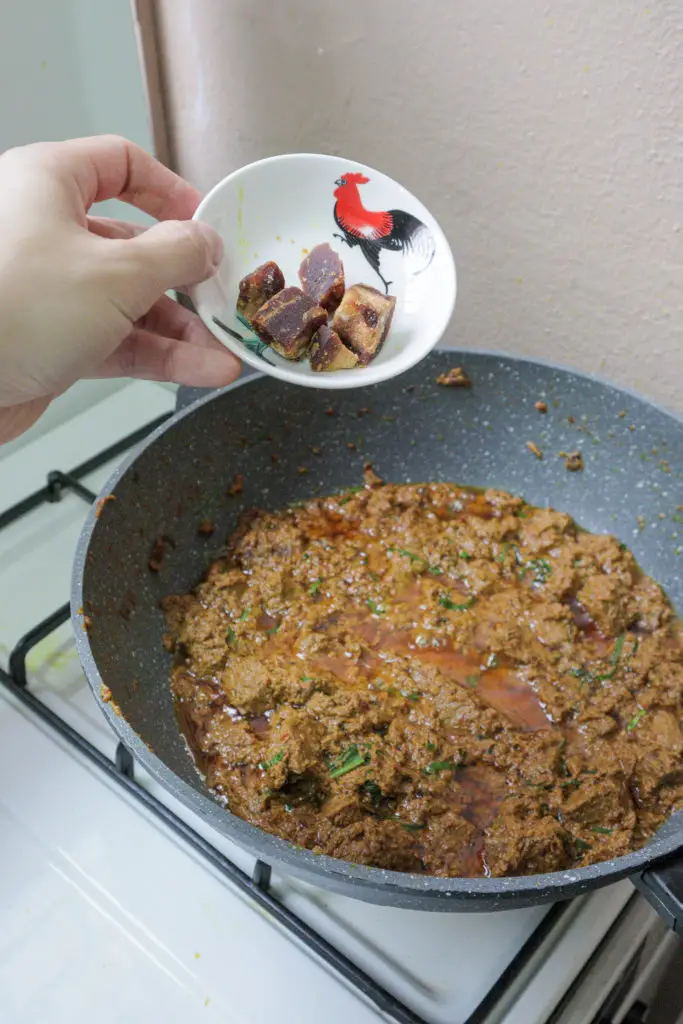
And gula Melaka… 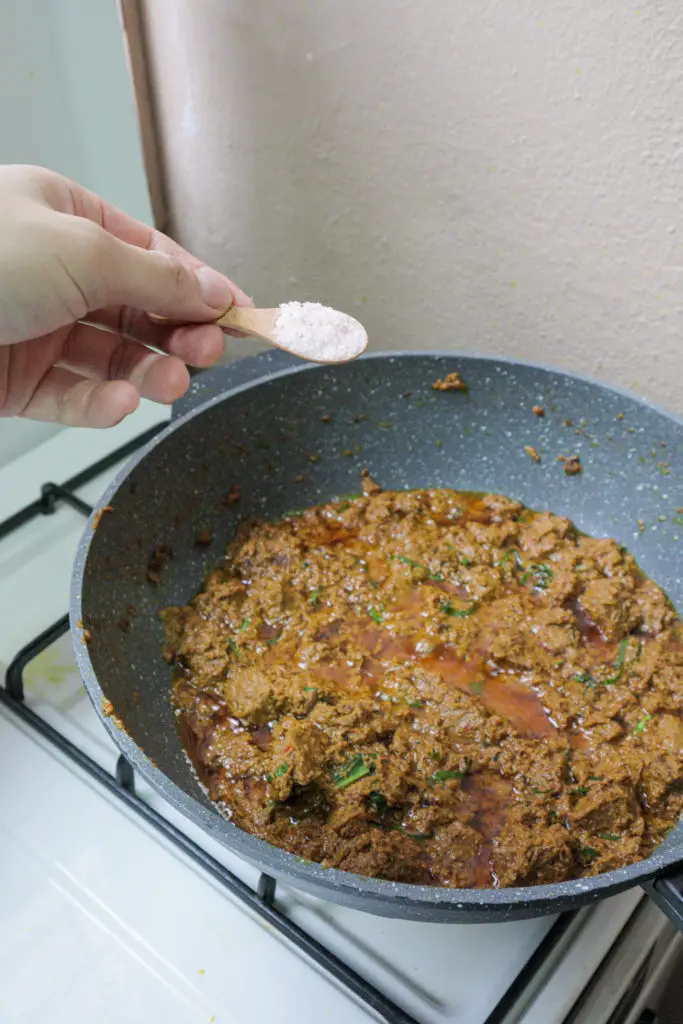
… and salt to taste. 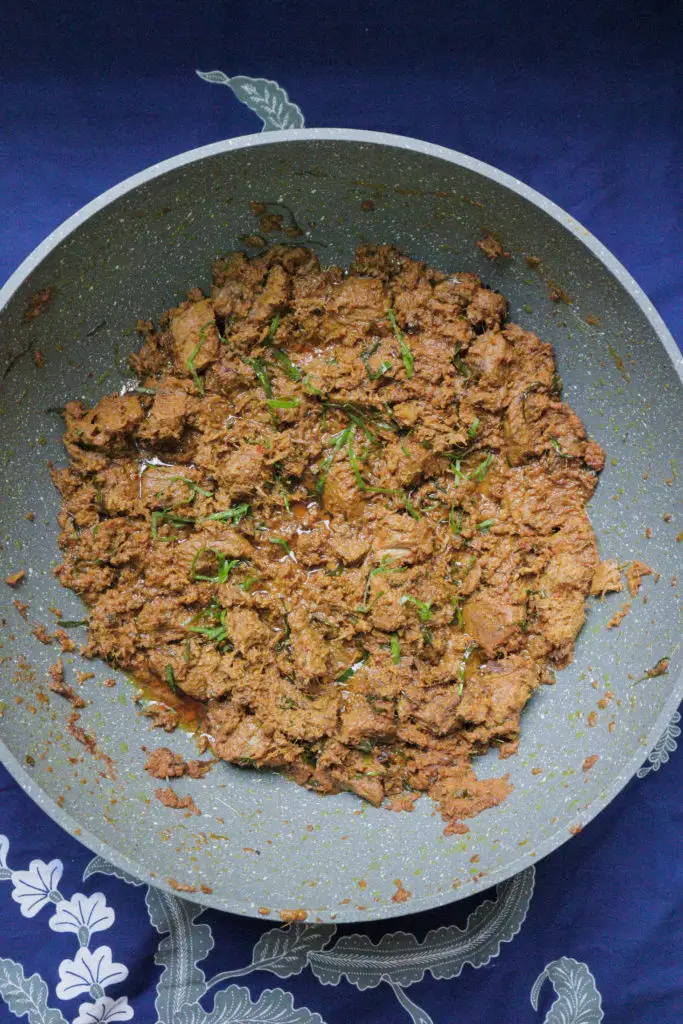
Rendang (Tik) Tok Recipe
Course: Lunch, DinnerCuisine: Malay, IndonesianDifficulty: Intermediate8
servings40
minutes4
hoursOur version of Rendang tok – now complete with daun kunyit!
Ingredients
1 kg beef, cut into 2-inch cubes (we used topside)
- Wet blend ingredients
6 Indian small onions or shallots, roughly cut
6 garlic cloves, roughly cut
3-inch ginger, roughly cut
2-inch turmeric root, roughly cut
2-inch galangal, roughly cut
14-16 dried chillies, soaked in water and seeds removed
3 lemongrass stalks, sliced
2 green cili padi (optional)
150ml water
- Dry blend ingredients
1 tsp cumin seeds
1 tsp fennel seeds
7 cardamoms
1 tbsp coriander seeds
8 cloves
2 star anises
1 tsp black peppercorns
1 cinnamon stick
- Other ingredients
1.5 cup cooking oil
400ml santan (coconut milk)
80g kerisik (toasted coconut paste)
1 small asam keping (tamarind slice)
60g gula Melaka or adjust to taste
salt to taste (about 2tsp for us)
1-2 daun kunyit (turmeric leaves), stems removed and julienned
2-3 daun limau purut (kaffir lime leaves), stem removed and julienned
Directions
- Combine wet blend ingredients
- Use a food processor and blend all the wet blend ingredients. Add water (about 150ml) if necessary. Set aside.
- Prepare dry blend mix
- Heat up a pan over medium heat. Fry all the dry spices without any oil until fragrant.
- Transfer all the dry spices to a pestle and mortar. Roughly grind the spices. Set aside.
- Let’s slow cook
- Heat up cooking oil in wok. Use enough oil to ensure there is a layer of oil over both wet and dry blend ingredients.
- Add the wet and dry blend ingredients. Mix well.
- When it is mixed well and colour has slightly darkened, add the beef cubes and santan. Mix well.
- Cover with lid and let it simmer over low heat for about 1.5-2.5 hours. Stir occasionally. The slow-cooking process is done when beef is tender, and sauce had reduced significantly with a layer of oil on top. (This is called pecah minyak – or when oil is released and separated naturally from the ingredients).
- The final stage
- Add the small piece of asam keping. This is to add a tinge of sourness to the rendang. Use sparingly
- Add kerisik and mix well. Kerisik gives rendang its distinct texture and fragrance.
- Add julienned turmeric leaves and kaffir lime leaves. Mix well.
- Finally, add gula Melaka and salt to taste. Mix well and cook until gula Melaka dissolves.
- It is done! Garnish with any remaining turmeric leaves & kaffir lime leaves for colour. Serve!
Notes
- Check out our first Rendang (Tak) Tok post here for more tips. Both recipes are the same.

